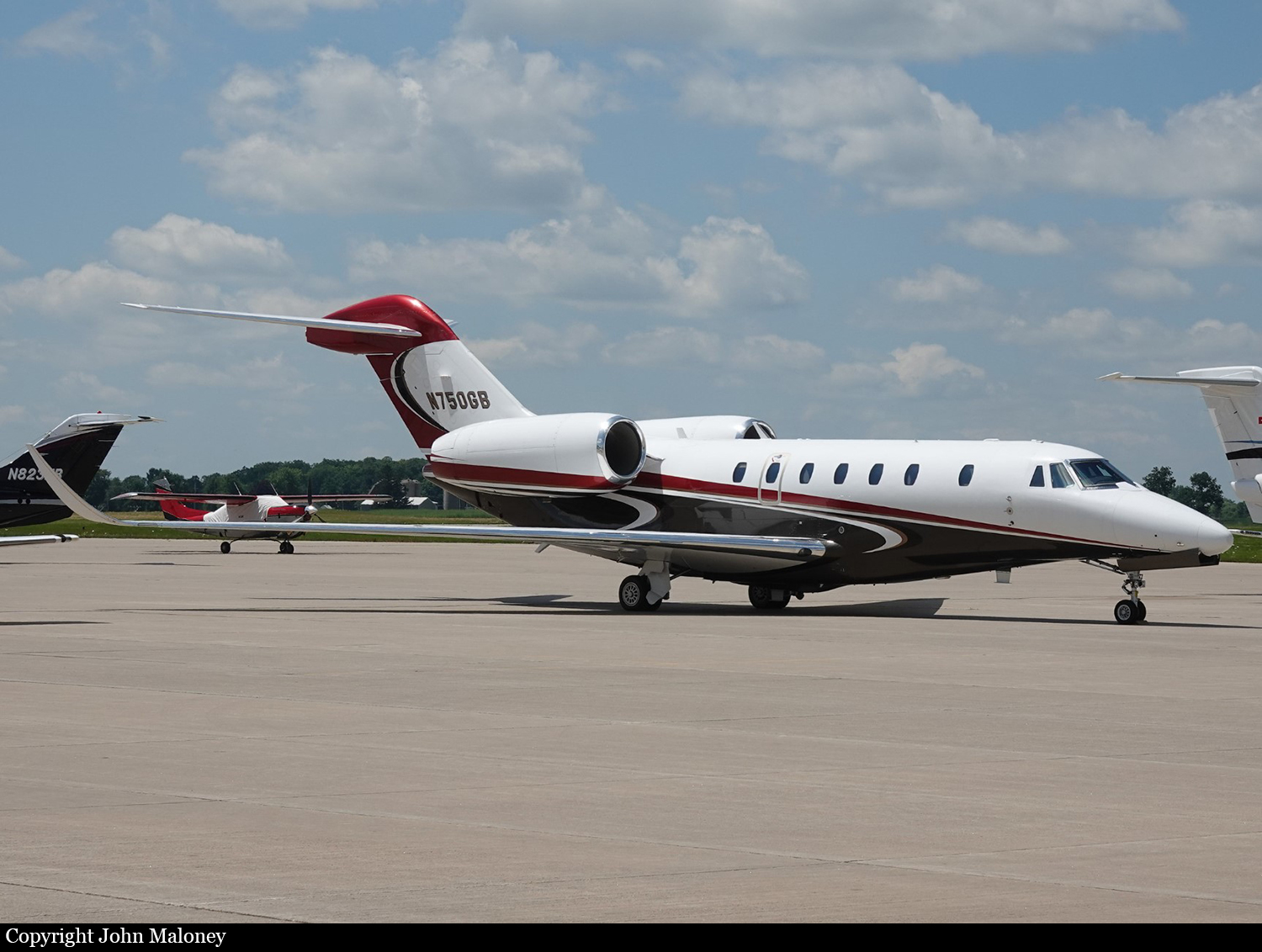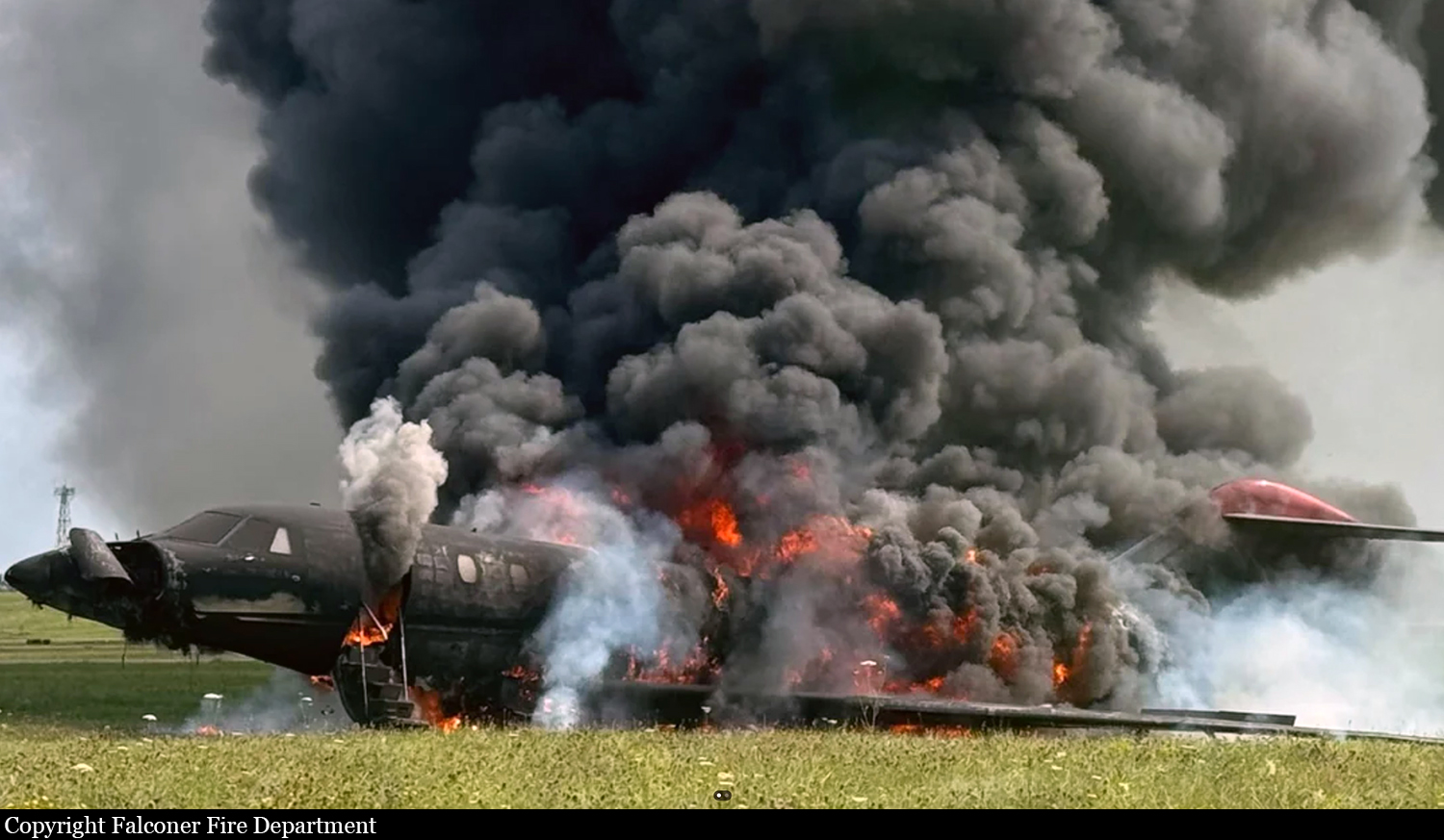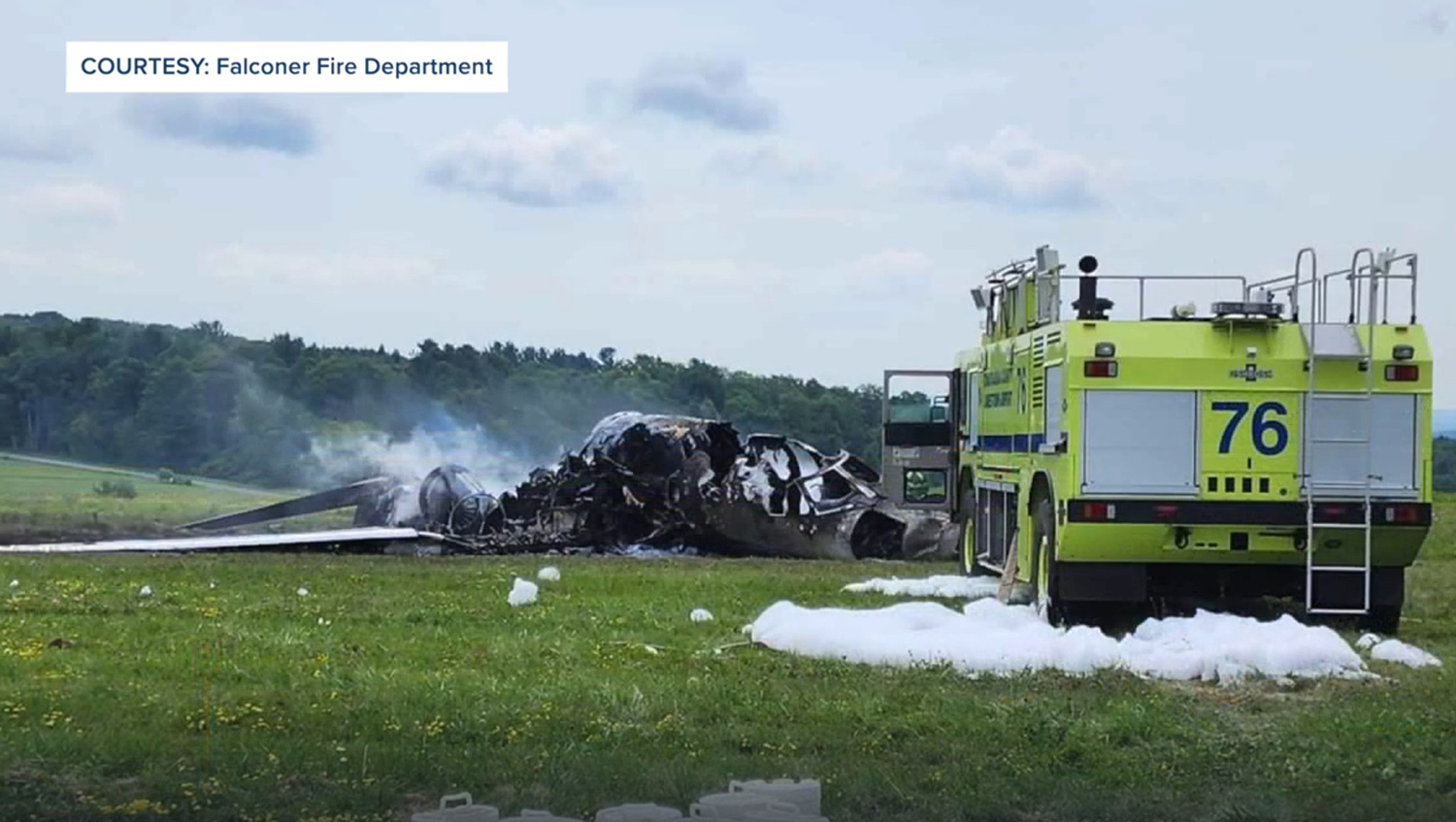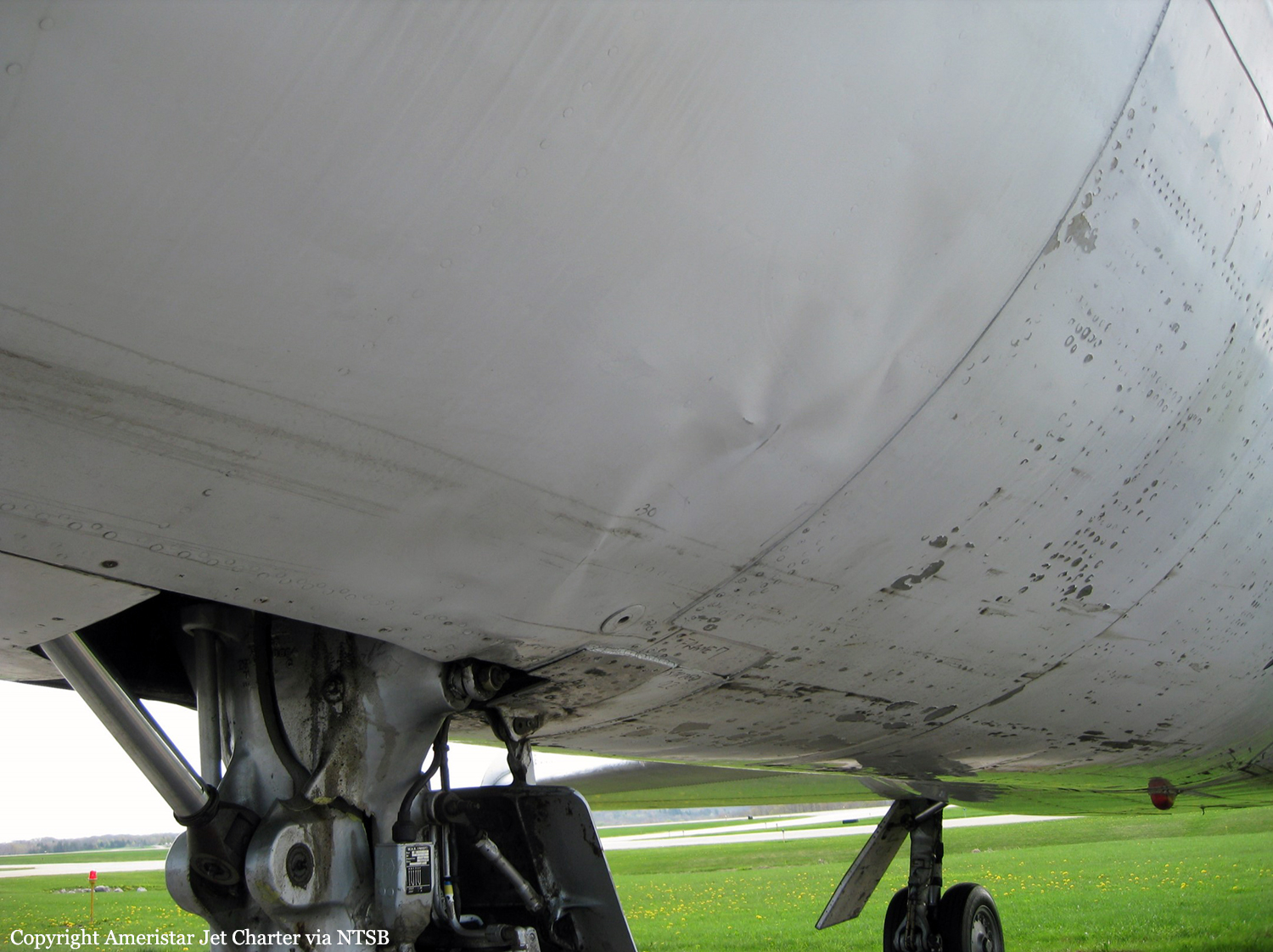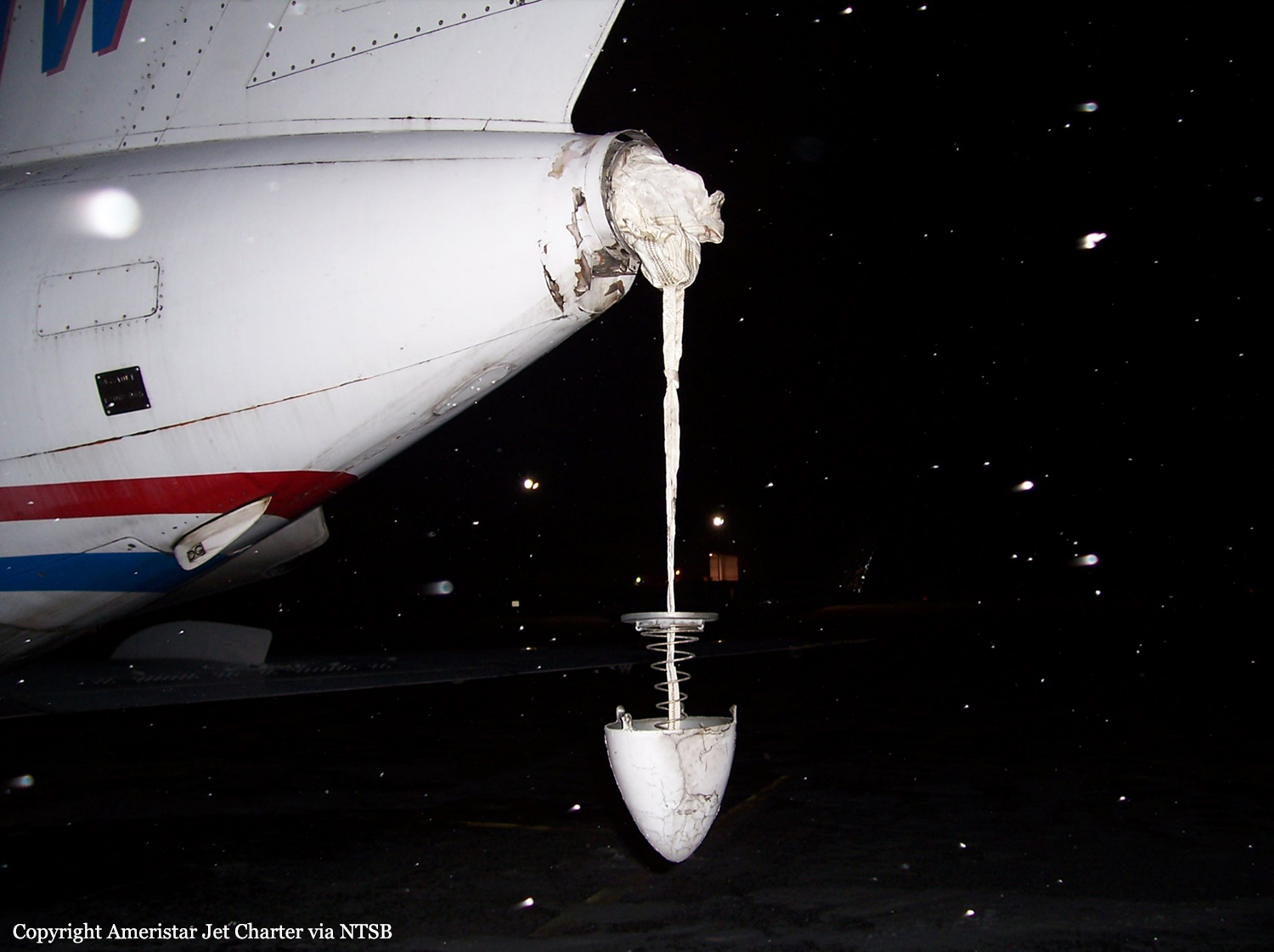Crash of a Cessna 750 Citation X in Jamestown
Date & Time:
Aug 5, 2024 at 1012 LT
Registration:
N750GB
Survivors:
Yes
Schedule:
Dunkirk – Fort Lauderdale
MSN:
750-0504
YOM:
2014
Crew on board:
2
Crew fatalities:
Pax on board:
0
Pax fatalities:
Other fatalities:
Total fatalities:
0
Circumstances:
The airplane departed Dunkirk-Chautauqua County Airport, State of New York, on a ferry flight to Fort-Lauderdale-Executive Airport, carrying a crew of two. After he reached the altitude of 10,000 feet, the crew reported technical problems with the onboard electric system and elected to divert to Jamestown-Chautauqua County Airport. On final approach to runway 25, at an airspeed of 157 knots and with a rate of descent of 1,000 feet per minute, the airplane impacted the ground at runway threshold and went out of control. It caught fire, veered off runway to the left and came to rest in a grassy area, bursting into flames. Both crew members were rescued with various injuries. The airplane was totally destroyed by fire.
